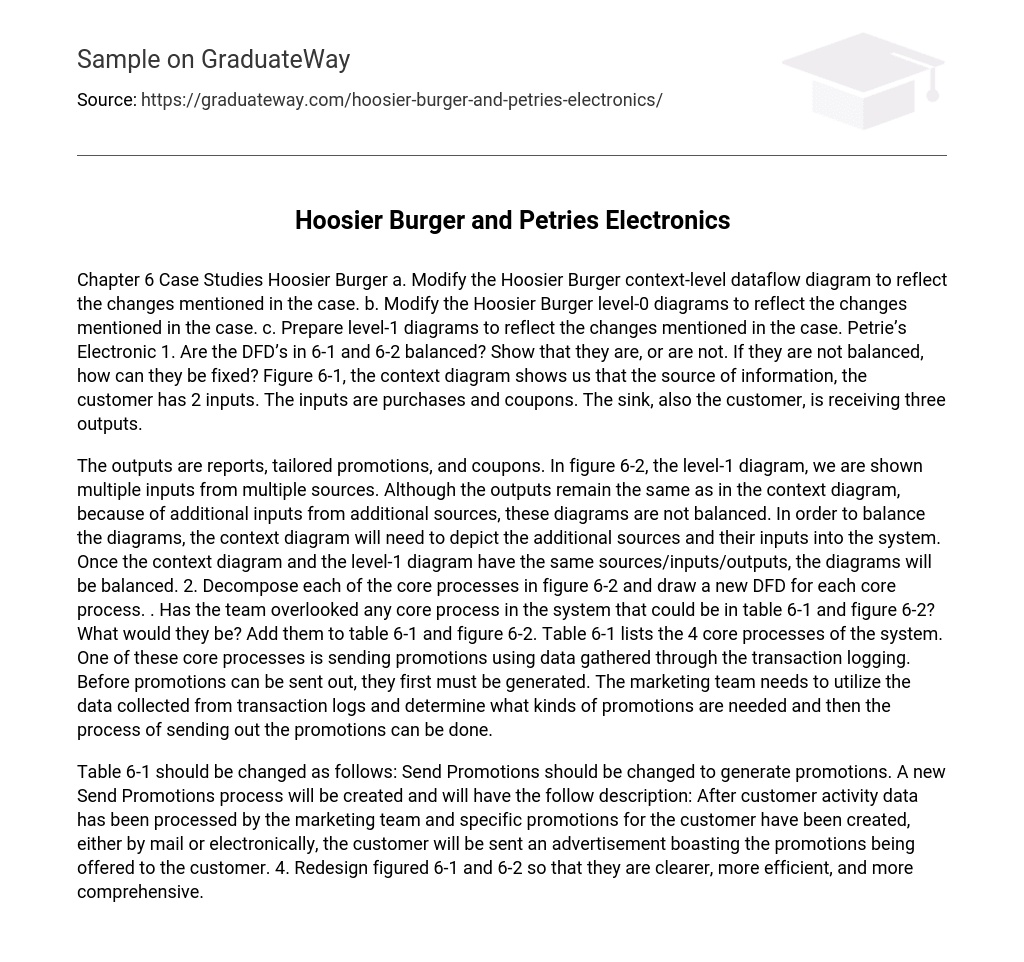Chapter 6 Case Studies Hoosier Burger a. Modify the Hoosier Burger context-level dataflow diagram to reflect the changes mentioned in the case. b. Modify the Hoosier Burger level-0 diagrams to reflect the changes mentioned in the case. c. Prepare level-1 diagrams to reflect the changes mentioned in the case. Petrie’s Electronic 1. Are the DFD’s in 6-1 and 6-2 balanced? Show that they are, or are not. If they are not balanced, how can they be fixed? Figure 6-1, the context diagram shows us that the source of information, the customer has 2 inputs. The inputs are purchases and coupons. The sink, also the customer, is receiving three outputs.
The outputs are reports, tailored promotions, and coupons. In figure 6-2, the level-1 diagram, we are shown multiple inputs from multiple sources. Although the outputs remain the same as in the context diagram, because of additional inputs from additional sources, these diagrams are not balanced. In order to balance the diagrams, the context diagram will need to depict the additional sources and their inputs into the system. Once the context diagram and the level-1 diagram have the same sources/inputs/outputs, the diagrams will be balanced. 2. Decompose each of the core processes in figure 6-2 and draw a new DFD for each core process. . Has the team overlooked any core process in the system that could be in table 6-1 and figure 6-2? What would they be? Add them to table 6-1 and figure 6-2. Table 6-1 lists the 4 core processes of the system. One of these core processes is sending promotions using data gathered through the transaction logging. Before promotions can be sent out, they first must be generated. The marketing team needs to utilize the data collected from transaction logs and determine what kinds of promotions are needed and then the process of sending out the promotions can be done.
Table 6-1 should be changed as follows: Send Promotions should be changed to generate promotions. A new Send Promotions process will be created and will have the follow description: After customer activity data has been processed by the marketing team and specific promotions for the customer have been created, either by mail or electronically, the customer will be sent an advertisement boasting the promotions being offered to the customer. 4. Redesign figured 6-1 and 6-2 so that they are clearer, more efficient, and more comprehensive.





